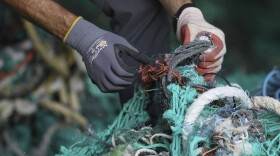HONOLULU — Hawaii lawmakers are considering bills that could force oceanfront property owners to remove sandbags and heavy tarps that can significantly contribute to coastal erosion.
Dozens of owners along Hawaii beaches have used loopholes in environmental laws to leave emergency measures in place for extended periods to protect homes, hotels and condominiums, The Honolulu Star-Advertiser reported Sunday.
Under proposed legislation in the current session, owners would face strict deadlines for removing protections and increased penalties for installing them without permission.
House and Senate bills set a hard deadline of three years for removing current and newly authorized emergency protections.
A bill introduced by Democratic Sen. Chris Lee increases fines for homeowners and contractors who install structures without state permission.
Owners and builders could both be fined up to $25,000 for each day that an illegal structure remains on the public shoreline, up from the current maximum fine of $15,000.
Lee said his bill clarifies that temporary fixes property owners have enjoyed are not going to become long-term solutions that cause permanent damage.
Losing beaches to erosion "will have a devastating impact on the local economy, on local businesses, on jobs, on people who live in those communities, to say nothing of the families who will lose that beach for their kids," Lee said.
Property owners can legally only keep emergency protections in place temporarily.
But the state Department of Land and Natural Resources has used liberal interpretations of the timeframe, allowing sandbag walls to remain in front of properties for years after issuing repeated approvals or losing track of them.
Coastal scientists warn the protective structures can be just as damaging to beaches as seawalls, which have contributed to the loss of about a quarter of the beaches on Oahu, Maui and Kauai.
Waves hitting an armored shoreline pull sand from the beach. Sandbags also have blocked public shorelines, created eyesores and littered beaches with heavy fabric and rope torn and whipped about by waves.
Property owners on Oahu's North Shore have taken some of the most dramatic steps by installing so-called burritos constructed of heavy, black material anchored by sand-filled tubes to protect homes from being pulled into the ocean.
Kelly Slater, 11-time world surfing champion, installed the protections without first obtaining state permission and paid a $2,000 fine. Slater said that without the beach armoring, owners "would have lost properties outright."




